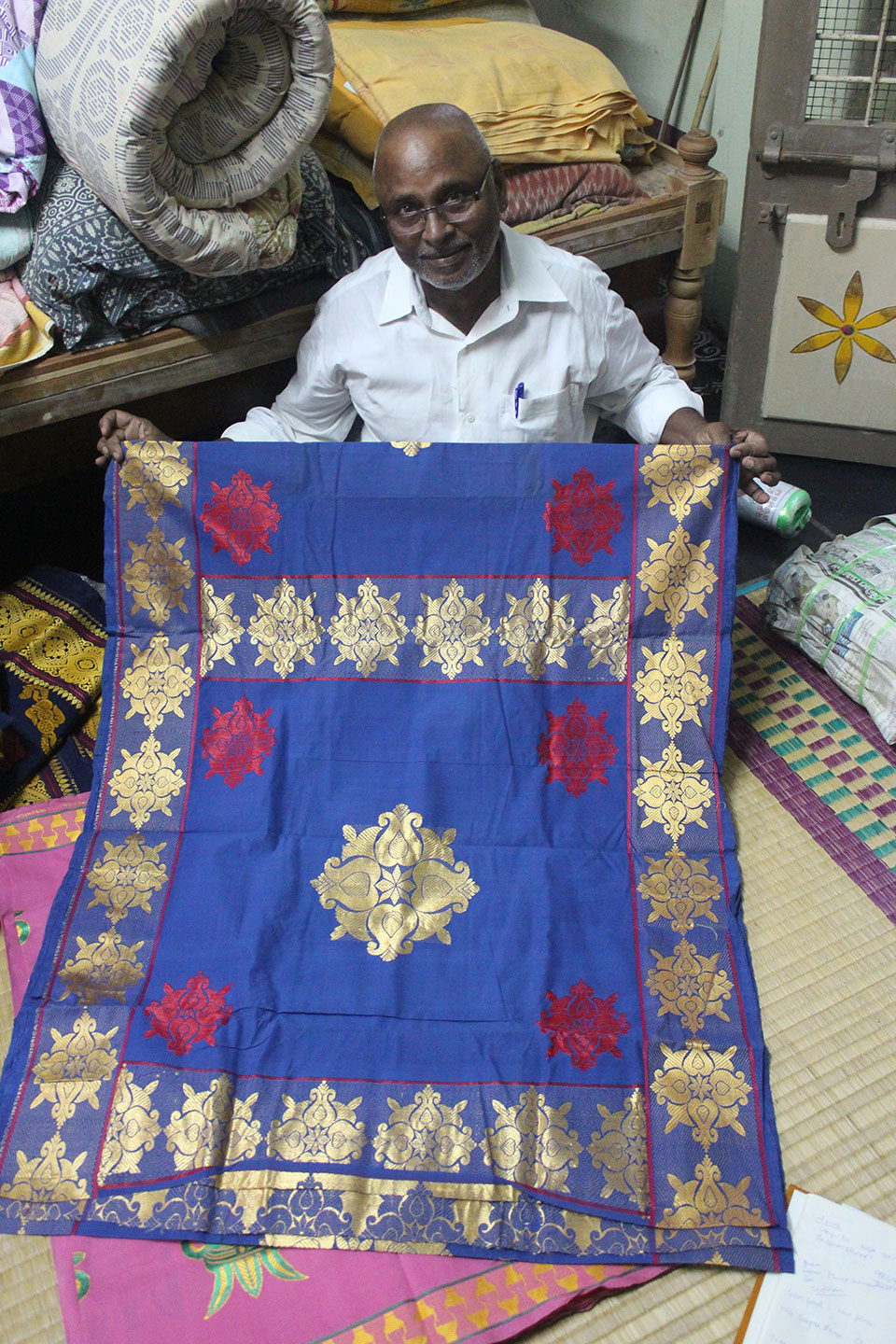
How Madras lost its textile legacy in checks

At one point, the global currency for trade, textiles, particularly the Madras checks, made the British establish a flourishing trade in the sleepy fishing village of Madrasapattinam. Today, the prized export fabric, even as we mark the 380th birthday of the city, has vanished entirely from the textile-scape.
The roots
However, the roots of the piece of cloth date back to years before the arrival of the British. Sreemathy Mohan, a textile enthusiast and researcher, says that the Madras checks that were typically in red, blue and white, were pre-dyed handwoven yarns.
These were also seen in the form of the lungis made in Kurunjipaadi and Nagapattinam. “Kurunjipaadi still has a major share as a producer of lungis sold across the country. There are British records of lungis being made in Santhome and Palayakat lungi during those days that is kept in the textile museum,” she says.
Sreemathy notes that Madras has contributed to a rich legacy of export of textiles, and one of the important items exported to Nigeria was the Real Madras handkerchief (RMHK). While it was made in Chirala in Andhra, it was sent out by exporters from Madras during the 1800s.
Sreemathy, who coordinated as textile researcher on an exhibition in Dakshina Chitra titled ‘Revisiting the Real Madras Handkerchief’, says, “The RMHK was an ethnic marker to the West African tribes who used it as a “birth to coffin” textile. Referred to as ‘George’ by the Igbo and Ijo tribes, and as ‘Injiri’ by the Kalabari tribes of Nigeria, it was referred here as RMHK – Real Madras handkerchief.”
“The Madras exporters packed the Madras cloth in “trunks” which contained 64 pieces of the square handkerchiefs to the main buyers, who were British trading firms. The Madras cloth was popular in Southern Nigeria and Sierra Leone, in Africa. In Nigeria, this eight-yard piece was used by women as ‘wrappers’ around their hips and as head ties.”
A huge market potential
The Madras handkerchief was given the prefix of ‘real’ as many imitations were being produced in Japan, Switzerland, and Germany. The RMHK was also known as ‘George’ cloth as it was exported from the city known for the Fort St George and also known by names like Guinea. Sreemathy says, “It’s popularity was in the zenith during the 50s, when Ivy league Universities had a bleeding Madras checks as its uniform.”

Textile revivalist Sabita Radhakrishna says that the fashion statement the Madras checks made was evident from the fact that women made dresses out of it. “The Madras checks was also popular as shirts and skirts. It was an easy fabric that could be made as any attire,” she says.
The decline
RMHK production and exports have now diminished and almost become extinct, due to the replication of designs in power loom and the financial and economic market conditions in Nigeria in the 70s. “The RMHK, bleeding madras and checked lungis that was exported to Nigeria – each of them had a distinctive character,” says Sreemathy, adding that it is time to give it a boost and revive the exports.
“There are weavers in Chirala in Andhra Pradesh making it, but they are stuck with the same designs. One should probably research and see what kind of designs are in demand in the old markets of Nigeria and other countries in Africa. They have moved to a more lustrous version in rayon. We need to come up with designs to cater to their requirements to bring back its glory. Power loom poses a huge threat to handloom and we have to ensure that the latter is a step ahead to preserve the tradition.”
Sabita observes that until about 20 years ago, Anakaputhur weavers in Chennai were making the fabric. “I had even placed orders with them for the fabric for my boutique then. When I visited the place recently, I noticed that the looms have vanished and the production of the cloth has been stopped completely. It is not a difficult fabric and it can be revived, provided we focus on it,” she says.
The Madras checks was, Deborah Thiagarajan, founder of Dakshina Chitra Museum, says, an extension of the long-standing tradition. She adds, “It was made into a global trend from here from the 1800s. The lungis in checks were tweaked to suit a market worldwide.”
Deborah had organised a seminar in 1994 that documented and presented the Madras checks for the reason that it was steeped in the history of the textiles along the Coromandel Coast. “This was something as big as the celebrated Kanjeevarams,” she says.
She adds that the checks are still in vogue, and giving Madras checks a reboot amid this wouldn’t be difficult. “An indigo-white or a red-white checked shirt can be inserted and branded as Madras checks, rightfully restoring its place,” she adds.
The magic of the checks can still be seen from the fact that there are enquiries about the RMHK from other countries, says Sreemathy. “Several Japanese tourists visiting the city contact me checking if they can have a sample of the RMHK,” she says, explaining the eternal fascination the piece of cloth continues to evoke.


